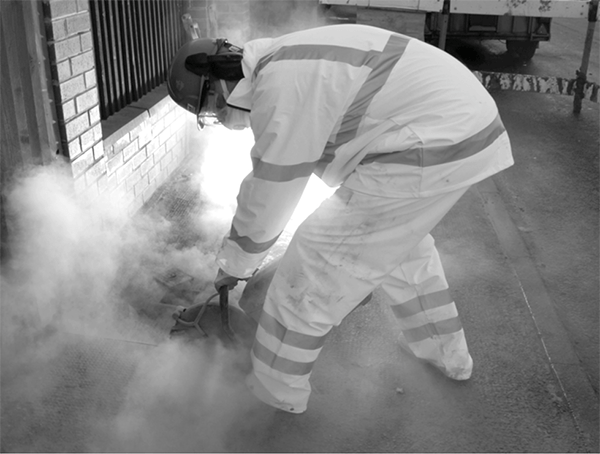 Very fine dust containing quartz, known as respirable crystalline silica (RCS), can cause serious and fatal lung diseases. Worryingly, exposures to these dusts are not being properly recognised and controlled in Britain and around the world.
Very fine dust containing quartz, known as respirable crystalline silica (RCS), can cause serious and fatal lung diseases. Worryingly, exposures to these dusts are not being properly recognised and controlled in Britain and around the world.
The problem is likely to be widespread in many industries as silica can be found in almost all kinds of rock, sands, clays, shale and gravel as well as products such as bricks and concrete.
Sectors with direct exposure to RCS include the construction industry. Dust is created during a number of processes including cutting, sanding or carving materials such as stone, concrete, or brick. Some of the dust may be extremely fine – too fine to see in normal lighting – and tiny enough to be breathed deeply into the lungs, causing harm to health.
Technological advances in the last century have served to dramatically increase dust exposure to workers. This is due to the high pressure and air equipment now available and in use across industrial settings such as the construction industry.
Workers who are exposed to RCS on a daily basis for years are at risk of developing a chronic and possibly severely disabling lung disease known as silicosis. Suffering from silicosis increases the risks of developing lung cancer. Workers are also at risk of developing chronic obstructive pulmonary diseases (COPDs) such as bronchitis and emphysema.
Despite this, the situation is far from hopeless, and dust control techniques have been proven to be highly effective. With suitable action, the RCS issue can be managed and addressed, but far greater awareness of the issue is, in the first instance, needed.
To achieve this, BOHS is now leading an initiative called Breathy Freely aimed at reducing the incidence of occupational lung disease in the construction sector, to be launched on Worker Memorial Day, Tuesday 28th April 2015.
This is very much a collaborative approach and confirmed partners include the Health and Safety Executive (HSE), Constructing Better Health, Land Securities, and Mace.
The Breathe Freely initiative will provide practical advice and information for employers, to help to raise standards and keep them high:
- A new Worker Health Protection Management Standard, which is a free tool developed specifically for the construction industry setting out good practice for managing health risks
- Twenty fact sheets developed for twenty different trades highlighting the main hazards, highest risks and preferred control options
- How occupational hygienists can help recognise, evaluate and control the hazards on site
For further information on the initiative please visit www.breathefreely.org.uk, a centre of excellence on exposure control. The full website will be available on 28th April which is the launch date of the initiative.
Join us and be part of the solution. Support #BreatheFreely.
What makes us susceptible to burnout?
In this episode of the Safety & Health Podcast, ‘Burnout, stress and being human’, Heather Beach is joined by Stacy Thomson to discuss burnout, perfectionism and how to deal with burnout as an individual, as management and as an organisation.
We provide an insight on how to tackle burnout and why mental health is such a taboo subject, particularly in the workplace.



Excellent article and resource from BOHS via their http://www.breathefreely.org.uk website. A lot of research is needed to prove or dis-prove the anecdotal evidence that respirable crystalline silica (RCS) is likely to affect around 10 times more people that that of asbestos. That said, if the facts turn out that RCS will affect 1/10th of people than asbestos, that will still be too many. I’m seeing and hearing information coming into the safety media 40+ years after I first learned about these hazards in the UK coal mining industry – there really is no excuse for anyone to suffer any ill… Read more »